Wigs play a crucial role for those undergoing cancer treatment. They offer a sense of normalcy and confidence, especially for chemotherapy patients experiencing hair loss. Hair loss can be distressing, but you have options. From synthetic wigs to custom wigs, you can choose the perfect hair solution that suits your needs. Whether you prefer human hair wigs or synthetic hair wigs, the variety available ensures you find the perfect wig. Remember, wigs for chemotherapy patients are more than just accessories; they are a source of empowerment and comfort.
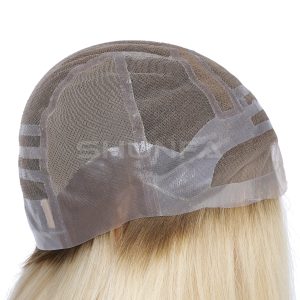
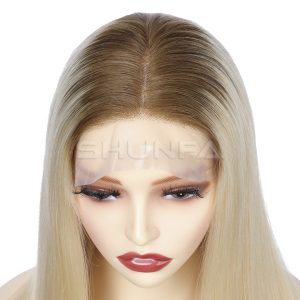
Understanding Your Needs
When selecting a wig during cancer treatment, understanding your needs is crucial. This process involves assessing your hair loss and considering your personal preferences. By doing so, you can make informed decisions that align with your lifestyle and comfort.
Assessing Hair Loss
Types of Hair Loss Due to Cancer Treatment
Chemotherapy often leads to hair loss, which can vary in type and severity. Some individuals experience complete hair loss, while others may notice thinning. Understanding the type of hair loss you face helps in choosing the right wig. Consumer Reports highlight that knowing your specific hair loss pattern allows you to select wigs that best mimic your natural hair.
Timing and Duration of Hair Loss
The timing and duration of hair loss can differ based on the chemotherapy regimen. Hair loss typically begins a few weeks after starting treatment and may continue throughout the process. By anticipating when hair loss might occur, you can ensure that you have a wig ready when needed. This preparation helps maintain your confidence and comfort during treatment.
Personal Preferences
Style and Color Preferences
Your personal style and color preferences play a significant role in wig selection. Whether you prefer a wig that matches your natural hair or want to try a new look, the options are vast. Consumer Reports suggest considering wigs that align with your personality and lifestyle. Perry Santanachote advises looking at photos of different styles to find inspiration. This approach ensures that your wig not only looks good but also feels like an extension of yourself.
Comfort and Material Considerations
Comfort is paramount when wearing a wig for extended periods. The material of the wig cap can affect how it feels against your scalp. Some prefer lightweight materials, while others might prioritize breathability. It is necessary to try on different wigs to assess their comfort level. Consumer Reports also suggest considering the climate you live in, as this can influence your choice of wig material. By prioritizing comfort, you ensure that your wig enhances your daily life rather than hindering it.
Exploring Wig Options
When selecting a wig, understanding the different options available can help you make an informed choice. This section will guide you through the types of wigs and wig cap constructions to consider.
Types of Wigs
Synthetic vs. Human Hair Wigs
Choosing between synthetic and human hair wigs depends on your needs and preferences. Synthetic wigs offer convenience. They maintain their style even after washing. You don’t need to style them daily. However, they may not look as natural as human hair wigs. Human hair wigs provide a more realistic appearance. They allow you to style them just like your natural hair. This flexibility can be appealing if you enjoy changing hairstyles. Consider your lifestyle and how much time you want to spend on wig maintenance when making your decision.
Ready-Made vs. Custom Wigs
Ready-made wigs are readily available and often more affordable. They come in various styles and colors. You can try them on and find one that suits you. Custom wigs for cancer patients offer a personalized fit. They match your head shape and hairline. This option provides comfort and a natural look. Custom wigs take time to create, so plan ahead if you choose this route. Both options have their benefits. Your choice depends on your priorities and timeline.
Wig Cap Construction
Monofilament and Lace Front Caps
Monofilament caps offer a natural scalp appearance. Each hair is hand-tied to a sheer material. This construction allows for versatile styling. You can part the wig in any direction. Lace caps create a natural-looking hairline. The lace blends with your skin, making the wig appear more realistic. These features enhance the overall look of the wig, providing confidence and comfort.
Full Lace and 360 Lace Caps
Full lace caps cover the entire head with lace. They offer maximum styling flexibility. You can wear the wig in updos or ponytails. This option is ideal if you want versatility. 360 lace caps have lace around the perimeter. They allow for styling away from the face. Both options provide a secure fit and natural appearance. Consider how you plan to style your wig when choosing between these cap constructions.
Practical Considerations
When selecting a wig during cancer treatment, practical considerations play a crucial role. Understanding costs and insurance coverage, along with proper maintenance and care, ensures you make the best choice for your needs.
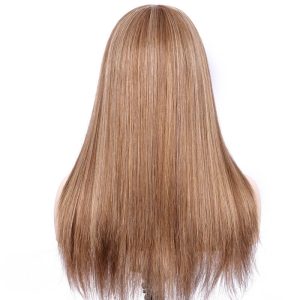
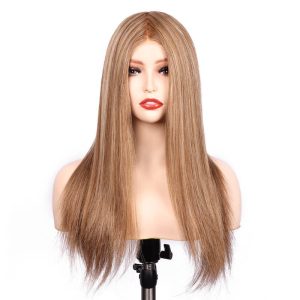
Budget and Insurance
Understanding Costs
The cost of wigs can vary significantly. Factors such as the type of hair, whether synthetic or human, and the construction of the wig cap influence the price. Custom wigs for cancer patients often come at a higher cost due to their personalized fit and natural appearance. It’s essential to set a budget that aligns with your financial situation. Consider the long-term value of investing in a quality wig that meets your needs and preferences.
Insurance Coverage for Wigs
Insurance may cover part or all of the cost of a wig, especially if it’s deemed medically necessary. Check with your insurance provider to understand your policy’s specifics. Some plans require a prescription from your doctor, stating the wig as a cranial prosthesis. This terminology can help in getting coverage. Knowing your insurance options can ease the financial burden and allow you to focus on finding the right wig.
Maintenance and Care
Cleaning and Storing Wigs
Proper maintenance extends the life of your wig. Regular cleaning is vital to keep it looking fresh and natural. Use products specifically designed for wigs to avoid damaging the hair fibers. Gently wash and condition the wig, then let it air dry on a wig stand. Storing your wig correctly prevents tangling and maintains its shape. Keep it in a cool, dry place away from direct sunlight.
Longevity and Durability Tips
To ensure your wig lasts, handle it with care. Avoid excessive heat from styling tools, as it can damage both synthetic and human hair wigs. When not in use, store the wig on a stand to preserve its form. Regularly check for any signs of wear and tear, and address them promptly. By following these tips, you can enjoy your wig’s beauty and functionality for an extended period.
Finding the Right Fit
Selecting a wig that fits well is crucial for comfort and confidence. A proper fit ensures that your wig stays secure and looks natural. This section will guide you through measuring for a wig and trying on different options.
Measuring for a Wig
Head Measurements
Accurate head measurements are essential for finding a wig that fits perfectly. Use a flexible tape measure to take the following measurements:
- Circumference: Measure around your head, starting at your hairline in the front, going behind your ears, and back to the starting point.
- Front to Nape: Measure from your hairline at the center of your forehead to the nape of your neck.
- Ear to Ear Across Forehead: Measure from the top of one ear, across your forehead, to the top of the other ear.
- Ear to Ear Over Top: Measure from the top of one ear, over the crown of your head, to the top of the other ear.
- Temple to Temple Around Back: Measure from one temple, around the back of your head, to the other temple.
These measurements help you choose the right size, whether you opt for ready-made or custom wigs for cancer patients.
Adjusting for Comfort
Once you have your measurements, ensure the wig fits comfortably. Most wigs come with adjustable straps or hooks inside the cap. Use these to tighten or loosen the fit as needed. A snug fit prevents the wig from slipping but should not cause discomfort. If you feel pressure or tightness, adjust accordingly. Comfort is key to wearing your wig with confidence.
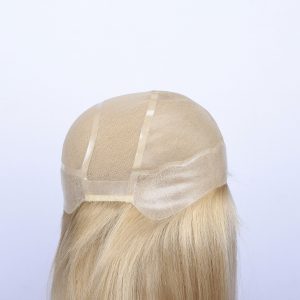
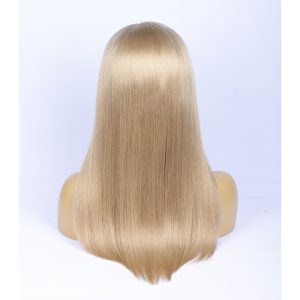
Trying on Wigs
In-Store vs. Online Shopping
Trying on wigs can be an exciting part of the selection process. You have two main options: in-store or online shopping.
- In-Store Shopping: Visiting a wig store allows you to try on different styles and sizes. You can feel the materials and see how each wig looks on you. Store staff can offer guidance and answer questions. This hands-on experience helps you make an informed decision.
- Online Shopping: Buying wigs online offers convenience and a wider selection. Many websites provide detailed descriptions and customer reviews. Some even offer virtual try-on tools. Ensure you know your measurements and read return policies before purchasing. Online shopping can be a great option if you prefer browsing from home.
Seeking Professional Assistance
Consulting with a wig specialist or hairdresser can enhance your wig selection experience. Professionals can offer personalized advice based on your needs and preferences. They can help you find a style that complements your features and lifestyle. A specialist can also assist with fitting and styling your wig. Their expertise ensures you choose a wig that boosts your confidence and suits your unique situation.
Conclusion
Selecting the right wig during cancer treatment empowers you. It offers comfort and boosts confidence. Remember these key points:
- Understand Your Needs: Assess hair loss and personal preferences.
- Explore Options: Consider synthetic vs. human hair and ready-made vs. custom wigs for cancer patients.
- Practical Considerations: Budget, insurance, and maintenance are crucial.
- Find the Right Fit: Accurate measurements ensure comfort.
Your choice reflects your style and resilience. Custom wigs for cancer patients provide a personalized touch. Embrace this journey with confidence and self-assurance.






